We know that an improved performing website means a better relationship with your customers, which means higher conversions and ultimately a higher ROI. But, how do you do it and where to start? This Beginner’s Guide to Feedback and Conversion Rate Optimization (CRO) is your go-to on how to use feedback to drive your CRO strategies and help engage with customers and turn them into loyal advocates. In this guide we will walk you through the basics of CRO— starting off with what it is, why it matters to begin with and how feedback will be your new (not so secret) weapon.
In this guide, we will investigate the following:
- What is CRO?
- Why does CRO matter?
- Steps to initiating CRO
- Using feedback to drive your CRO strategy
What is CRO?
Conversion rate optimisation (CRO) is the process of increasing the percentage of users who perform a desired action on a website.
To put it simply, it’s the actions and strategies used to increase the number of people on your website who are doing what you want them to do.
Basically it refers to converting visitors into users or customers, whether they are buying a product, liking a post or requesting more information. Whatever it is you’re trying to get your visitors to do, CRO can help.
What is it not?
Though generating a higher ROI can be one of the results of a good CRO strategy, it’s not about increasing traffic in the hope of generating more revenue. It’s about observing what is working and what’s not, and continuously using these observations to improve your website and optimise it for a higher conversion rate.
It’s not based on guesses, hunches, or what others are doing, nor is it about getting as many users as possible. To be clear: CRO is focused on getting more out of your current user base.

Examples of Conversions
Making a sale is not the only type of conversion, it can be whatever it is you’re trying to get visitors to do on your website or app, as long as you can measure it. Some examples of conversions include:
- Creating an account
- Spending a designated amount of time on a particular page
- Filling out a form
- Following an account on social media
- Sharing content on social media
- Signing up for an email list
- Downloading an app or content
- Moving to a paid subscription
- Making an appointment
Why does it matter?
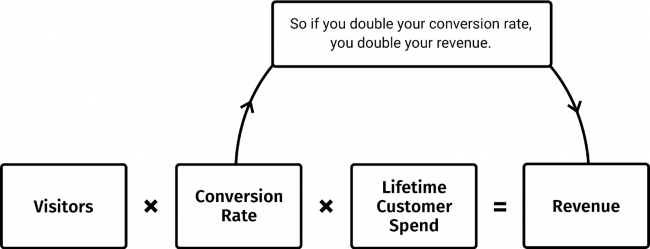
Though it can be easy to get lost in a sea of information, CRO is really all about creating a strategy to capitalize on the visitors you already have by taking a look at the customer journey and understanding where and, more importantly, why people are dropping out of the funnel.
If you’re not optimising your points of conversion, visitors are less likely to take the actions you want them to take. This means you probably won’t get the leads you want (qualitative or quantitative) which potentially means a lowered return of investment (ROI), and nobody wants that.
Here are some examples of why CRO is (or will be) very important to your digital marketing strategy:
More customers, less spending
One of the primary reasons to start trying to improve your conversion rate is that you want more customers without having to spend an arm and a leg on advertising. A few years ago you could get by with paid online ads with, for example, Google Ads. These days, paid advertising is only getting more costly and competitive, and as a result, the role of the website itself has become much more prominent.
Lower your cost per acquisition (CPA)
Did you know that doubling your conversion rate essentially means halving your CPA, or cost-per-acquisition? CPA measures the cumulative costs of a customer doing something that results in a conversion.
The right kind of customers
One of the key ideas behind conversion rate optimisation is to get more of the right kind of customers. You don’t want to target just anyone, you want to ensure you are searching for people who love your product or service. You want to find people who will actually help your marketing efforts by becoming an advocate for your brand. CRO will make your website customer-centric and ultimately drive those conversions!
Room for improvement
One thing CRO experts will tell you; it does not matter if you have a stunning, well-designed site with lots of visitors converting into users, you can always make the conversion process more painless for your visitors. Improving your online shopping funnel, broken links or fixing small bugs can have a huge impact on your conversion rates.
CRO gets things going
By optimising your conversion rates you will increase traffic to your website, customers will want to come back and are more likely to recommend you to a friend. Creating a well-crafted, consistent CRO strategy ultimately leads to more conversions, leading to more traffic, meaning more revenue and an increase in your market share. Win-win!
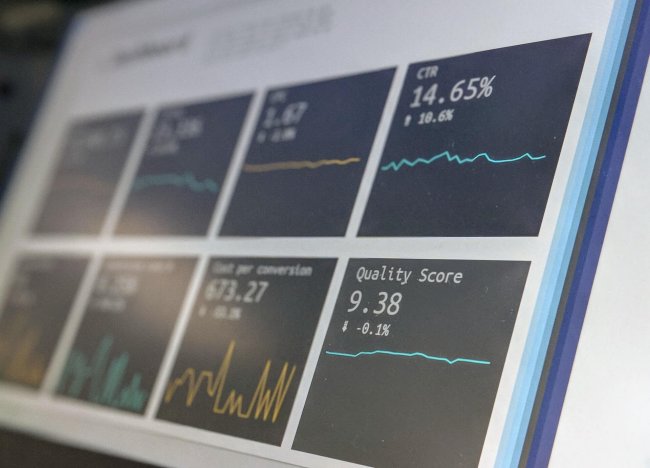
It’s pretty easy to understand why CRO is important, but can sometimes be tricky to understand and pinpoint why your rates are dropping. Here are a few common causes of low conversion rates.
Some causes of a low conversion rate
- Usability: Can users search your site easily for what they’re looking for? Make sure that the most important things can be found easily, that you’re not overwhelming visitors with too many options, and that search results will (most likely) match what people want.
- Bad call to action: Is your CTA clear and easy to find? According to this digital marketing agency, 70% of small business websites lack a clear call to action (CTA) on their homepage, which is a big mistake. People need to know what the purpose of your website is quickly, or they will take their business elsewhere.
- User Experience: Are your graphics too distracting or overwhelming? 38% of people will leave a website if it fails to produce attractive content. So remember, your layout matters.
- SEO: Are your search engine optimisation efforts accurate and relevant? Well-optimised sites rank higher in search engines, meaning they’ll appear almost immediately when the users are in search of related content, products or services. So if you’re neglecting SEO, your website won’t show up for potential visitors. This means lower traffic to your website, and in turn, your chances of conversion. Use one of these tools to improve your conversion rate.
- Poor copy: Know your customers. Make an effort to understand the psychology behind your users’ motivations and cater your copy to them accordingly. Also, just making sure the copy is clear and understandable is super important.
- Difficult checkout: According to the Baymard Institute, roughly 61% of people abandon shopping carts because of high costs, while 27% of people cite complicated checkouts as the reason for dropping out. Keep this in mind!
- Not collecting feedback: Have you asked your visitors why they’re dropping out? Have you asked if there’s anything you can do to improve their experience? It may seem pretty obvious, but often the best way to increase conversion rates is by simply asking your visitors what you can do better.
Steps to Initiating CRO
There are a few things you can do before you start implementing a CRO strategy so that you can analyse data and implement strategies effectively.
Set CRO Goals
Firstly, you must identify your goals for every page that’s being optimised. These goals will become your standard for knowing when your conversion rate optimisation strategies have worked. Also, they must align with your overall business strategy. To talk in CRO-lingo, make sure that the one metric that matters (OMTM) is in line with your North Star Metric (NSM). For example, Spotify’s NSM would be ‘time spent listening’, while Amazon’s is ‘amount of purchases per month’. Finding the right NSM is key to defining your CRO goals.
Identify KPIs
Now ask yourself, what do I consider a success in terms of meeting goals? Identifying your key performance indicators (KPIs) are essential as they will tell you if you are hitting your goals. So time spent on page (KPI), into checked out shopping carts (OMTM), into revenue (North Star). Though your KPI’s will differ hugely depending on what kind of business you’re in. If you work in sales, you might look at customer turnover rates or shopping cart abandonment rates. Whereas if you’re in marketing you might look at monthly website traffic or traffic from organic searches. Whatever KPI’s you choose, make sure they’re relevant to your business.
Check out the Conversion funnel
Figure out what part of the funnel you want to optimise. Use analytics to find out where users are leaving your site most frequently.
Consider all channels
For CRO, you want to include users from all possible channels. How are your users getting to your website? Whether your traffic is coming from Pinterest, email, or blogs, you can use cohort analytics to separate users into different categories. This allows you to identify CRO opportunities and determine which channel is converting the most.
Ask your users
By requesting feedback, you can find out what’s working and what’s not working for your users. For example, let’s say you’ve noticed a lot of people are abandoning their carts just before checkout, but you can’t figure out why. Checking in with your visitors will give you the unique insights you need to solve the issues that you would not get from hard data.
How to calculate CRO
A guide about how financial institutions can collect feedback on their digital channels and the digitising Financial Industry.
You should always begin by putting yourself in your visitors’ shoes and looking closely at your site. CRO is a process of diagnosis, hypothesis and testing, it is not about guessing or making assumptions based on what’s working for someone else.
Determine what time period you want to use in calculating your Conversion Rate. Dividing your unique visitors from a certain week by the number of people converted that same week will give you that week’s conversion rate.
You don’t have to use unique visitors, but whatever metric you do decide on, it’s important to remember that consistency is key.
For example: if 100 people read your blog in a day and 10 people sign up for your newsletter, then that’s a conversion rate of 10%.
Now, how exactly do we bring this number up?
We thought you’d never ask!

Free White Paper: Digital Feedback and the Finance Industry
Using Feedback to drive your CRO strategy
A result of the customer-centric world we live in is that user feedback is taking centre stage in marketing strategies, and has become a crucial tool for maintaining a satisfied customer base and for growth-hacking your online business.
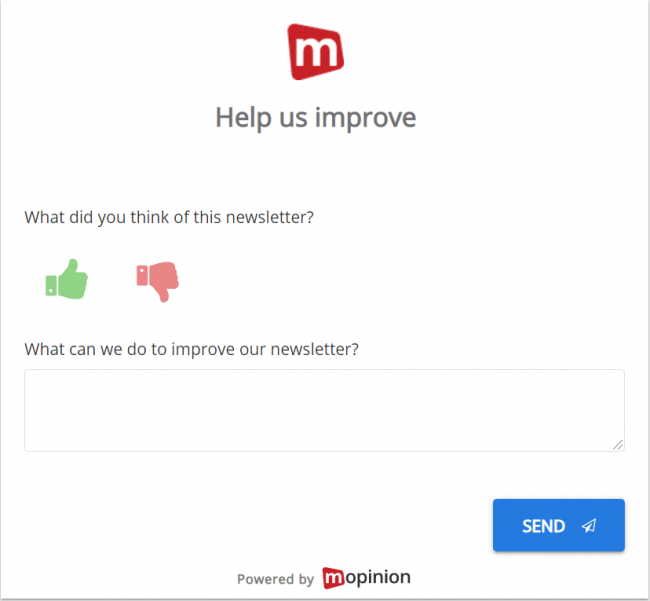
What is Growth Hacking?
The term “growth hacking” refers to a creative marketing strategy that focuses solely on the growth of the business. Growth hacking looks at the entire funnel, focusing on retention and referral, as well as obvious things like awareness and acquisition. Nowadays, growth hacking is a key part of most businesses’ marketing strategy, and it’s essential for strategies like CRO.
Why is feedback important to CRO?
One thing that we all know is that if you only ever follow what others are doing, you’ll never be ahead of the game. This is very important to remember as marketing thrives off of new, fresh ideas. Though at Mopinion we believe that great marketing starts with understanding and empathising with your customers by utilising the right tools.
Start off any strategy by diving into the mind of your users and spending time trying to understand what motivates them. Collecting user feedback is a great and simple way to get to know your users and find out exactly what’s stopping them from crossing the ‘finish line’ of your website.
Whether it’s making a sale or downloading a white paper, rather than guessing or making assumptions as to what your users want, now you can get specific and detailed insights into the motivations behind your users’ behaviour. This allows you to rectify any issues on your website so that the customer has an optimal experience using your site or product.
Not only that, but user feedback can also give you insights into what went right as well as went wrong, meaning you can capitalise on your existing customers by focusing on what you and your company are already doing well.
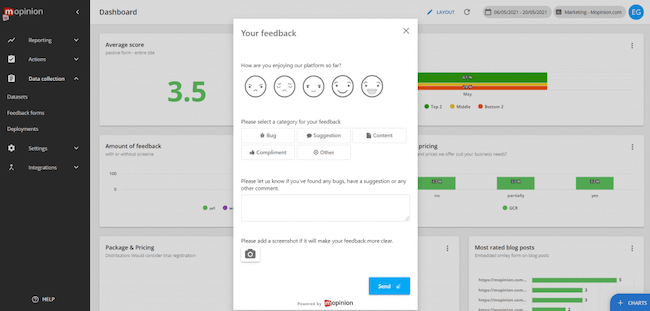
There are numerous strategies you can use for collecting and analysing feedback, though they all depend on your organisation’s goals, the digital channels you use and how you wish to proceed with the feedback you’re given. Here are some general tips for obtaining feedback.
- Do not ‘wing’ it. Feedback is a strategy which takes time and effort. Take the time to determine what it is you want to find out from your users, and develop a strategy that will ensure you get the best results possible. Without a clear feedback strategy, you’d be guessing what you think users want.
- Do your research. In order to obtain meaningful insights into the behaviour of your visitors, you will need a real-time customer feedback software such as Mopinion. Check out our list of the best customer feedback tools.
- Stay relevant. Don’t clutter your website with illogically worded questions. Make sure your feedback surveys are asking questions relevant for the visitor at that particular point in time or location on your website. For example, it wouldn’t make sense to ask a visitor to provide an NPS prior to completing any actions on your website (as this metric requires the visitor to have had some sort of experience or history with your website/brand).
- Be strategic. Place feedback forms across your website in places that are easily visible. You can employ a passive approach via a feedback button on the side of your website or an active approach, for example deploying a feedback form when a visitor leaves the page, makes a purchase or scrolls for a long time.
- Be clear and concise. It’s more effective, and you’ll get more responses if you only ask 3-4 questions. Anything longer could be seen as too time-consuming, and you won’t get the insights you need.
- Don’t limit yourself. Leave open answer fields for specific responses and more tailored insights.
As Bruce Temkin, Founder of Customer Experience Professionals association has said, and we agree…
“Don’t waste customers’ time asking them questions unless you are prepared to act on what they say.”
This seems pretty self-explanatory, you wouldn’t ask a question if you didn’t want the answer, would you? You can put out as many surveys and questionnaires as you like, but if you don’t actually utilise the data your customers give to you, then you, my friend, are wasting a very valuable resource.
Without customer feedback, CRO doesn’t really make sense. We can’t really optimise a site if we are just guessing how to improve it based on numbers alone. Feedback is an essential ingredient for a successful CRO strategy.
People like to let out their frustrations, but what they like even more is having those frustrations heard.
After you’ve analysed the data from the feedback forms, then you should immediately try to solve any issues that have come up. Show your visitors that you’re listening to them and that you value their feedback by constantly analysing, reviewing and updating your site.
Remember: CRO is a consistent, structured and ongoing process of making your website better over time.

CRO for Customer Retention
Did you know that acquiring a new customer is five times more expensive than retaining an existing customer? And that your chances of selling to an existing customer is 60-70%, which is a pretty big difference to the 5-20% chance of selling to a new customer.
It’s pretty clear from these figures that improving your customer retention rate is key to increasing your conversion rate and ultimately your ROI. Do this by fine-tuning your customer support team and ensuring you are helping your users to get the most out of their investment with your business.
Test, Test and Re-Test
Another important strategy to improve your conversion rate is to perform usability testing, all the time. Getting into the mindset of making small tweaks to your site and constantly reviewing your user experience is essential to your conversion rate optimisation strategy.

Testing different versions of a webpage is another important ingredient of any successful CRO strategy. Create alternative versions of a page with small tweaks, and display each version to a random group of your visitors and compare conversion rates to see which was the most successful.
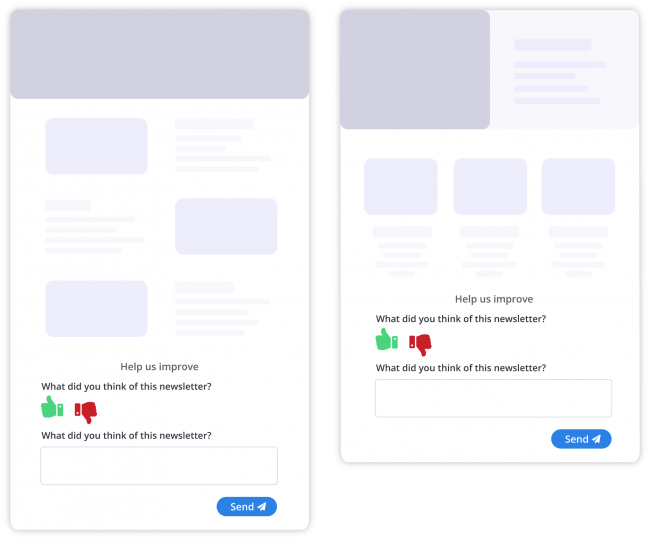
Multivariate testing involves making more changes and running more parallel pages. This type of test allows you to spot which elements are the most important for conversion, but it requires the audience to be split into smaller segments and will therefore take more time to arrive at a result.
A/B split testing is the go-to for most websites to gauge customer preferences. With this test, you only change a single element on a page and run the new version against the original and see which one converts better. If the new version doesn’t convert more, you should plan another test. Check out these tools.
Usability testing is carried out to measure users’ behaviour, this method of testing is done by observing real users attempt to complete tasks on a website, app, or other digital product to measure its functionality.

It’s virtually impossible to carry out these kinds of tests without a tool to help. Check out our top website optimisation services to help you choose what tool is right for you.
Taking action
Now that you’ve read this beginners guide, it’s about time you get to work optimising your website for maximum conversions! Through the process of collecting feedback, conducting tests, making changes and retesting you will no doubt start to gain insight into what your audience values.
Though, it’s important to remember that what users value can change easily, so view your CRO strategy as an ever-evolving guideline for improving your website and building on your user base.
The hidden strength of CRO is its ability to inform your other marketing strategies, meaning the data you receive can be easily translated for use in other campaigns. It’s a win-win!
Sign up to Mopinion today to start gathering the all-important user feedback to start increasing your customer retention rates, conversions and, subsequently, your overall ROI.
Want to learn more about Mopinion’s all-in-1 user feedback platform? Don’t be shy and take our software for a spin! Do you prefer it a bit more personal? Just book a demo. One of our feedback pro’s will guide you through the software and answer any questions you may have.Ready to see Mopinion in action?







